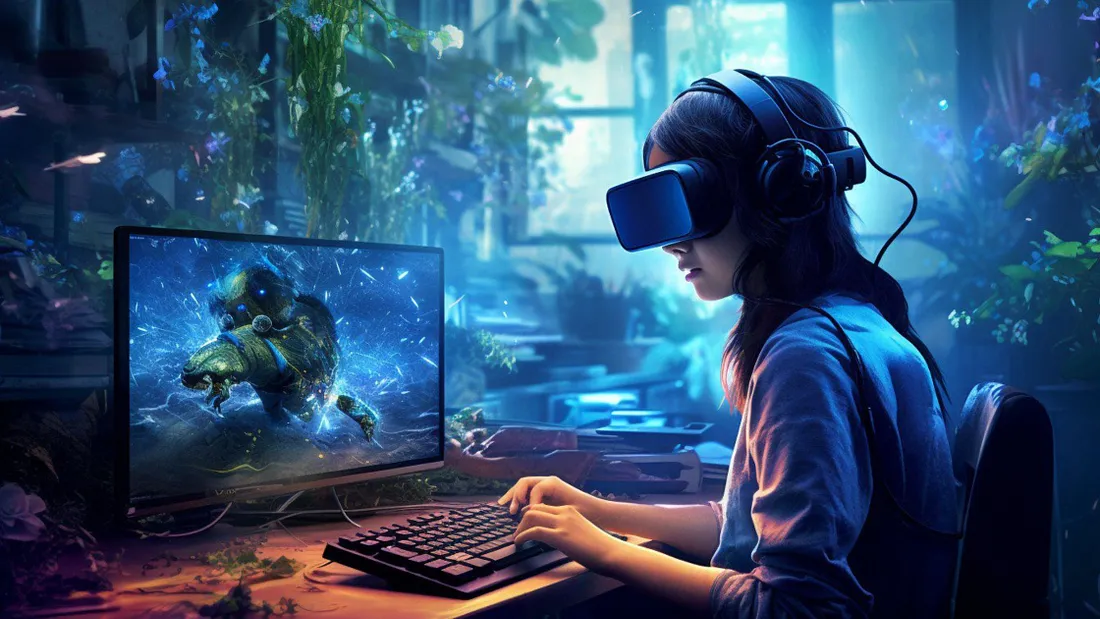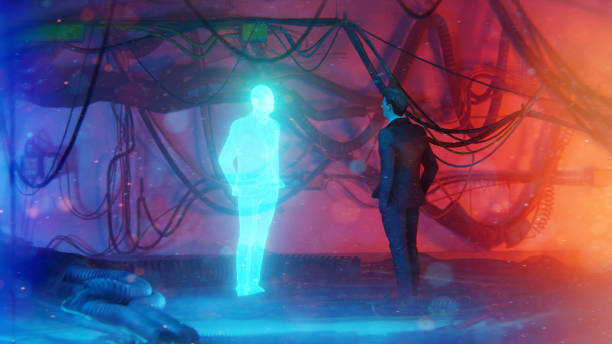In a smoky computer lab in the late 1970s, amid the hum of CRT monitors and the rhythmic chatter of keyboards, a few young programmers hunched over lines of assembly code. Their mission was not just to create pixels on a screen, but to breathe life into them. Their tiny characters needed to move, react, and pursue. The problem was both exhilarating and maddening. How do you make a ghost in Pac-Man chase the player convincingly? How do you make a spaceship in Space Invaders swoop down with menace?
These questions sparked the birth of artificial intelligence in games, a fledgling idea that began as a necessity and grew into an art form.
Today, decades later, the stakes—and the ambitions—are higher. In vast open worlds, with millions of virtual citizens and sprawling landscapes, AI is the unseen sculptor shaping our journeys. It’s the reason enemies flank and ambush, why civilians react to our heroics or crimes, and how game worlds breathe with a life of their own.
But as our digital realms grow more spectacular, the demands on game AI have never been greater. Players crave enemies that learn, cities that feel alive, and stories that adapt. They want worlds that don’t just look real—but feel real.
This is the story of how AI is transforming games, of the victories and frustrations along the way, and of the dazzling possibilities yet to come.
From Patterns to Personalities
The early days of AI in games were humble, even charmingly naïve. Consider the ghosts in Pac-Man: Blinky, Pinky, Inky, and Clyde. They weren’t just mindless pursuers. Each had its own programmed behavior. Blinky chased Pac-Man directly. Pinky tried to ambush. Inky was unpredictable. Clyde… well, Clyde sometimes wandered off, apparently confused. It was simple, but even these rudimentary behaviors gave players the sense of playing against cunning opponents.
As hardware grew more powerful, so too did AI. In the 1980s and 1990s, games like Doom introduced enemies that could chase the player through labyrinthine levels. Real-time strategy games like StarCraft crafted AIs that managed entire armies, balancing economy and offense.
Yet these AIs often relied on “cheats.” In strategy games, computer opponents might receive extra resources or know the player’s location, just to keep up appearances. And while it could produce tense battles, players eventually saw through the illusion. The AI wasn’t smarter—it was omniscient.
This fragile magic was both a triumph and a curse. Designers yearned for virtual enemies who didn’t just follow patterns but could think, adapt, and surprise.
The Dawn of Decision-Making
Game designers soon adopted a new tool: the finite state machine. An enemy could be in states like “patrolling,” “alerted,” “chasing,” or “searching.” Transitions between states created believable behavior. Guards in Metal Gear Solid could patrol until they spotted the player, then raise the alarm and pursue.
Yet finite state machines have limits. They can grow unwieldy, like vines choking a trellis. The more states and transitions, the harder it becomes to manage or predict the AI’s behavior.
In response, developers explored behavior trees. Instead of a rigid flowchart, behavior trees offered modular, hierarchical actions. An enemy could attempt to hide, but if hiding failed, it might choose to attack. This made AIs easier to manage and expand, giving rise to more complex and reactive opponents.
Games like Halo showcased this beautifully. Covenant enemies ducked behind cover, tossed grenades to flush players out, and retreated when outmatched. Players felt they were fighting living opponents rather than scripted robots.
Still, even behavior trees had limitations. They could seem clever, but their intelligence was ultimately shallow. Enemies didn’t truly learn. They executed pre-designed behaviors.
The holy grail remained: adaptive, learning AI.
Learning to Learn
For decades, “machine learning” was a phrase whispered mostly in university labs. But as the 2010s dawned, AI research exploded. Self-driving cars, facial recognition, and voice assistants became everyday realities. In gaming, this new AI frontier held thrilling potential.
Imagine enemies who adapt their tactics over time. In a stealth game, perhaps guards start investigating the specific corners where you often hide. In a strategy game, the AI could recognize that you prefer building air units and counter with anti-air defenses. Machine learning could turn games from static puzzles into dynamic challenges.
Some studios experimented with “reinforcement learning,” where AI agents learn through trial and error. Games like OpenAI’s experiments with Dota 2 showcased bots learning complex team strategies, adjusting their play based on human opponents.
But implementing learning AI in commercial games remains fraught with challenges. Developers need predictability. A game where AI learns might become too hard, or exploit bugs. A player could train enemies into impossible super-soldiers without meaning to. Testing such systems becomes a nightmare.
Moreover, modern games ship worldwide and must pass certification tests. Dynamic AI could introduce chaos developers can’t control. The dream remains tantalizing—but elusive.
Yet even without true learning AI, games are becoming smarter in dazzling ways.
The Illusion of Life
One of the great secrets of game development is this: AI in games often isn’t about true intelligence. It’s about crafting illusions that feel intelligent.
Consider the bandits in The Last of Us Part II. They don’t merely charge the player. They communicate, flank, call each other by name, and react with panic if one of their friends is killed. These details create emotional weight. Players feel they’re fighting people, not pixels.
In Red Dead Redemption 2, NPCs remember your interactions. Steal from a shopkeeper, and he may glare at you days later. Ride past a stranger in the wilderness, and you might find him injured, crying out for help. The AI isn’t conscious—but the game stitches together behaviors that create emotional storytelling.
Ubisoft’s Assassin’s Creed series uses “crowd simulation,” where thousands of citizens stroll, chat, and react to chaos. They flee from fights, mutter insults, or gather around street performers. It’s not true intelligence—but it makes ancient cities feel alive.
Developers often deploy “tricks” to maintain the illusion. Enemies might always miss their first few shots, giving the player a chance to escape. They might politely wait their turn to attack, like brawlers in an old kung fu movie. In open-world games, civilians often exist only near the player. Walk too far, and they vanish to conserve resources.
These illusions, though not true AI, are among the most potent tools in a designer’s arsenal. Because in games, perception is reality.
AI and Narrative: Tales that Respond
Beyond combat, AI is transforming narrative. Games like Detroit: Become Human or Telltale’s The Walking Dead hinge on choice and consequence. Characters remember what you’ve done. Dialogues change. Endings branch.
Creating such systems requires sophisticated AI to track decisions and adjust storytelling. Developers build “story graphs,” where nodes represent scenes, and edges represent choices. The challenge is ensuring the narrative feels cohesive, even as it branches wildly.
Yet even these narrative AIs have limits. Truly dynamic storytelling—where the AI invents new plots on the fly—remains beyond our reach. Natural language processing has advanced, but games need consistency, pacing, and emotional resonance. A procedurally generated story risks being incoherent.
Still, new tools like AI-driven dialogue generators are emerging. Projects like AI Dungeon allow players to enter free-text commands, and the AI spins narratives in real-time. The results can be astonishing, hilarious, or nonsensical. We stand on the brink of interactive storytelling where AI becomes a co-author.
Bigger Worlds, Bigger Challenges
Perhaps the most visible impact of AI lies in open worlds. Games like Skyrim, The Witcher 3, or Cyberpunk 2077 offer cities teeming with people, forests crawling with wildlife, and dynamic weather systems. AI governs everything from traffic patterns to predator-prey relationships.
Bethesda’s Radiant AI in Skyrim allows NPCs to perform daily routines, go to work, visit taverns, or react to the player’s deeds. A blacksmith might close shop at dusk, head to the inn, and sleep until dawn. These systems give worlds a sense of continuity.
But bigger worlds introduce new problems. AI must handle pathfinding across enormous terrains. NPCs might get stuck behind a tree, wander off cliffs, or break immersion by bumping into walls.
Moreover, simulating entire cities is computationally expensive. Developers must decide how much of the world “exists” when the player isn’t watching. Many games “sleep” distant areas, only simulating AI within a certain radius around the player.
Cloud computing promises new solutions. Studios like Microsoft have explored offloading complex AI calculations to remote servers. This could allow truly massive simulations. Imagine an online world where millions of AI citizens pursue careers, politics, and relationships, even when players are offline.
Yet cloud AI raises ethical and logistical concerns. What happens if servers go down? How much personal data is needed to shape AI experiences? These questions linger as the industry pushes forward.
AI as Designer: Procedural Generation
AI isn’t only the puppet—it’s becoming the puppeteer. Procedural generation uses algorithms to create content: levels, quests, even entire worlds.
Roguelikes like Spelunky or Hades generate new layouts each run. No two journeys are alike. Minecraft builds entire landscapes from mathematical seeds. No Man’s Sky famously promised a universe of eighteen quintillion planets, each with unique terrain and wildlife.
AI-driven procedural generation offers freedom and scale impossible by human hands alone. Yet it demands careful design. Randomness without purpose can feel empty. Players crave crafted moments—set pieces, story beats, emotional arcs.
Games like Left 4 Dead solved this with an “AI Director.” The Director monitors player stress levels and adjusts tension. If players are struggling, it eases up, spawning fewer zombies. If they’re breezing through, it unleashes chaos. It’s not just randomness—it’s orchestration.
The future hints at even more potent tools. Generative AI models could design entire levels based on natural language prompts. A developer might type, “A gothic castle with hidden passages and an eerie library,” and the AI could build a playable space. This democratizes game development, but also challenges artistic authorship. Who is the true creator—the human, or the algorithm?
Enemies That Remember Us
As AI grows more sophisticated, a fascinating frontier emerges: persistent AI memory.
Imagine an RPG where enemies remember how you defeated them last time. In a future stealth game, guards might learn your favorite hiding spots and patrol accordingly. In a multiplayer shooter, AI opponents could study your tactics across matches.
This introduces thrilling stakes—but also risk. Games must remain fun. An AI that counters all your moves can feel oppressive. Developers must balance learning with forgiveness.
Ubisoft experimented with AI memory in Watch Dogs Legion. Certain enemies remembered previous encounters with the player, creating personal grudges. The goal was to deepen immersion. Yet the system also created unforeseen quirks, like random pedestrians turning hostile for no apparent reason.
Persistent AI is a frontier full of promise—and peril.
The Ethics of Smarter AI
As game AI grows more lifelike, ethical questions sharpen. Should NPCs feel pain, even simulated? Is it ethical to create virtual beings who beg for mercy before dying?
Games like The Last of Us Part II stirred controversy because enemies call each other by name, scream in anguish, and mourn fallen friends. Some players found it emotionally powerful. Others felt manipulated, disturbed by killing digital characters who seemed almost too real.
Moreover, adaptive AI could raise fairness issues. If an AI learns too much about a player’s style, it might become unbeatable. And the more games gather player data to improve AI, the greater the privacy concerns.
Game developers must navigate a minefield: crafting immersive experiences while protecting players emotionally and ethically.
AI’s Future: Toward Digital Life
What lies ahead for AI in games? The horizon glows with possibility.
Imagine an RPG where every NPC has unique memories, goals, and relationships. A blacksmith might be secretly plotting rebellion. A shopkeeper might fall in love with the hero—or betray them. Worlds could evolve, responding to player actions in subtle, unpredictable ways.
Generative AI tools promise rapid content creation. Entire quests, dialogues, even character personalities could emerge from machine learning models. Indie developers might build worlds rivaling AAA studios in depth and scale.
VR and AR will push AI further. In a VR world, AI characters might read your body language, adjust conversations to your emotions, and react to your gestures in real time. The line between reality and game will blur.
Yet we must proceed with care. AI is a tool, not a replacement for human creativity. The best games will still need artists, writers, designers, and composers to infuse worlds with soul.
The Human Heart of Artificial Intelligence
After all the algorithms, the neural networks, the behavior trees—game AI remains rooted in one truth: we play to feel something.
We want enemies who scare us, allies who inspire us, worlds that sweep us into wonder. AI is not merely code. It’s the ghost in the machine, the spark that turns pixels into people.
In the coming years, AI will make our games bigger, smarter, and stranger. But its true magic will be the same as it was back in the arcades of the 1970s: crafting illusions so perfect that, for a moment, we forget we’re playing a game at all—and believe we’ve stepped into another world.
And in that world, the enemies will be smarter, the worlds vaster, and the adventures limited only by the reaches of imagination and code.






